The city of Whistler is a winter getaway nestled in the mountains of British Columbia. While winter sports are its main attractions, the "resort municipality" attracts visitors from all over the world throughout the year; there are plenty of outdoor activities even sans snow. Whistler village is where the main skiing action takes places because of the nearby mountains with ski runs that end right in the center of town. It's really nice to come down from the top of the snowy mountains, exerting a lot of effort, and then glide triumphantly into the village (within walking distance of beer, hamburgers, and coffee). If you're familiar with resort towns in the Alps, then you'll be right at home in Whistler with its quaint historic Alpine atmosphere.
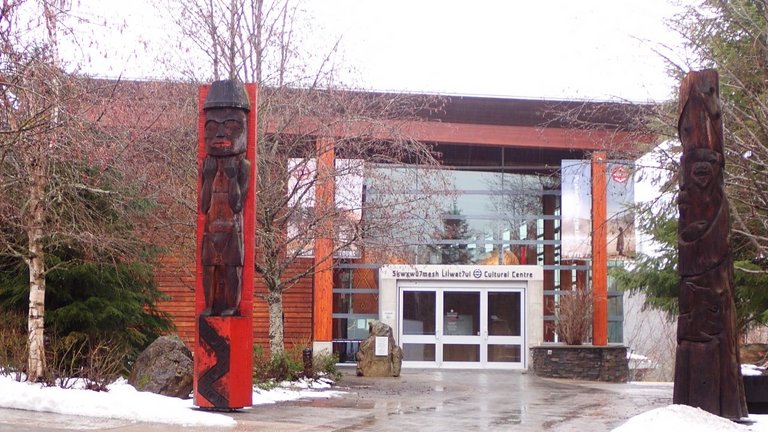
There are a few sights scattered throughout the city that add a bit of historical context. The first settlements in this area began in 1914, and the municipality was incorporated in 1975, so it's a relatively young town. It is believed that Indigenous tribes used to inhabit the area, and there are a few spots throughout the city that pay homage to their culture.
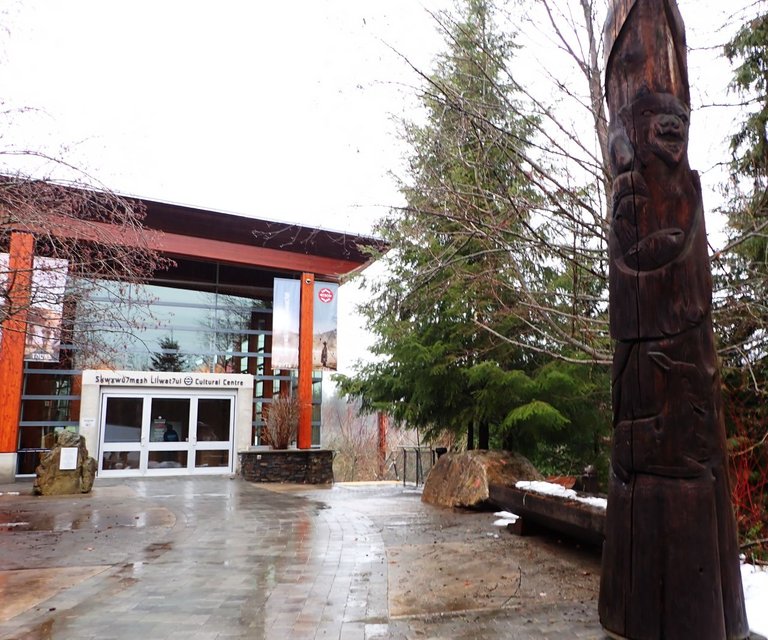
The Squamish and Lil'wat nations are two indigenous groups whom are believed to have called this place home. This building is the Squamish Lil-wat Cultural Centre. My instinct was to call these wooden structures totem poles, but as it turned out, these two nations did not have totem poles per se but family story poles, house post, welcome posts, and territory markers. The posts usually contain animal figures that are important to the family or kinship group.
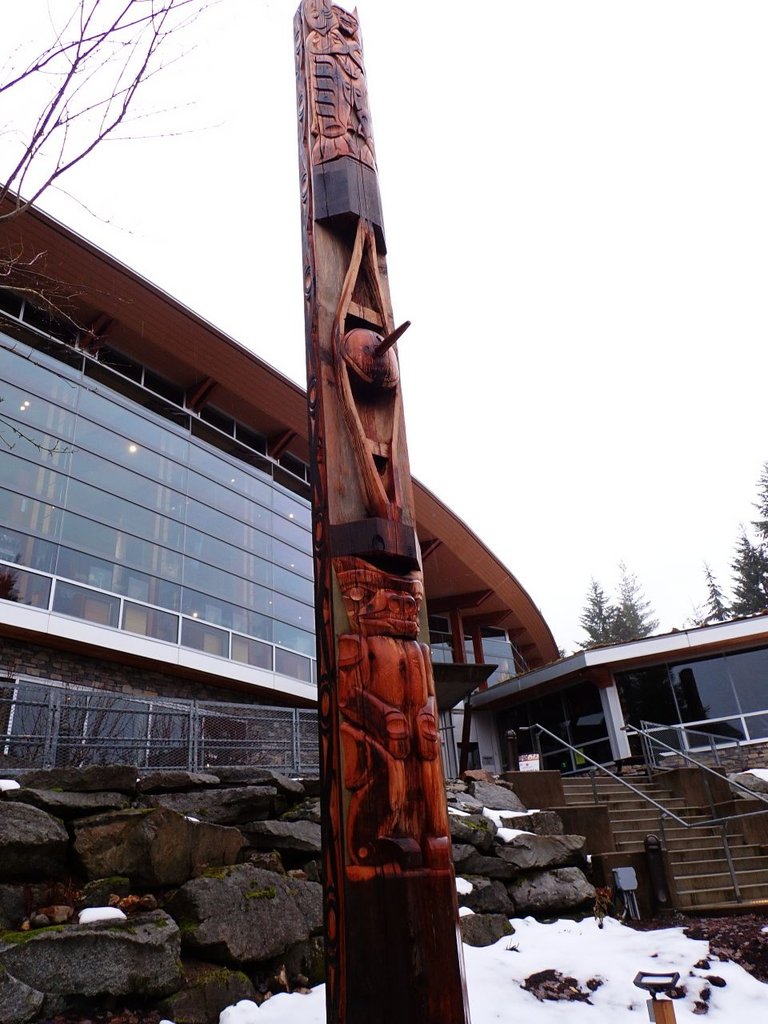
Not far from the cultural centre, there is a steel sculpture that depicts the mythological figure of thunderbird. The creature can take several forms depending on the indigenous group's interpretation of the story.
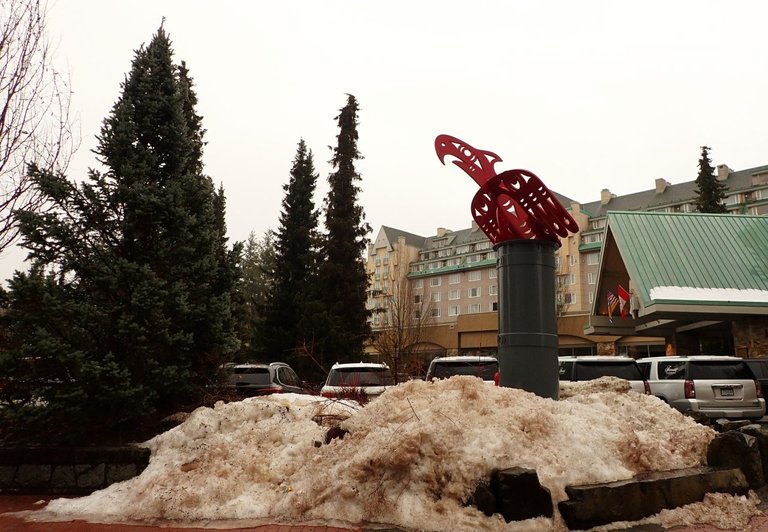
The Squamish and Lil'wat nations believe the thunderbird comes to help those in need of food, shelter, and tools. Messenger of the creator, he embodies strength and change of the past, present, and future, as represented by its three feathers. Others have a different interpretation and emphasize different aspects of the creature, which is said to reside in nearby Black Tusk mountain.

Fitzsimmons Creek sends a powerful torrent of water through town when the rainwater and glacial meltwater fill its banks. This river has played an important role in the city's history and development.
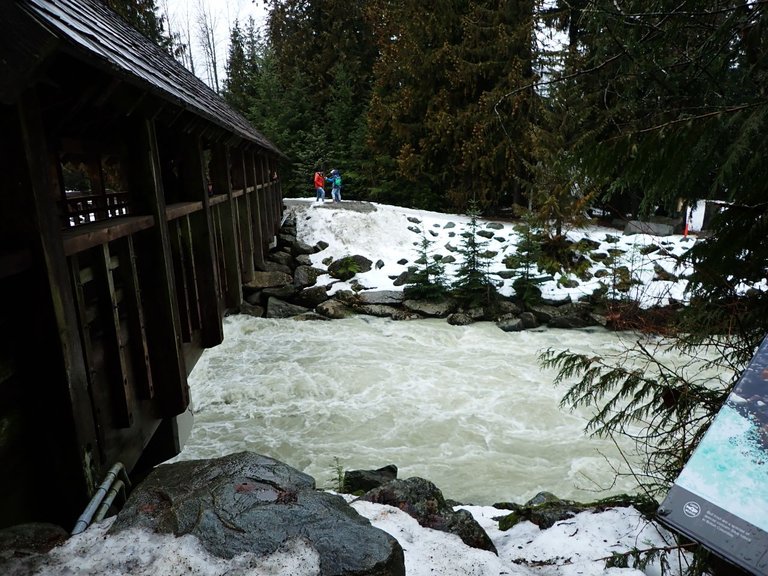
Walking through the roofed bridge is like walking through history. Footsteps sound hollow with hints of echoes. The powerful rush of water reverberates as the current roils and roars below the bridge.
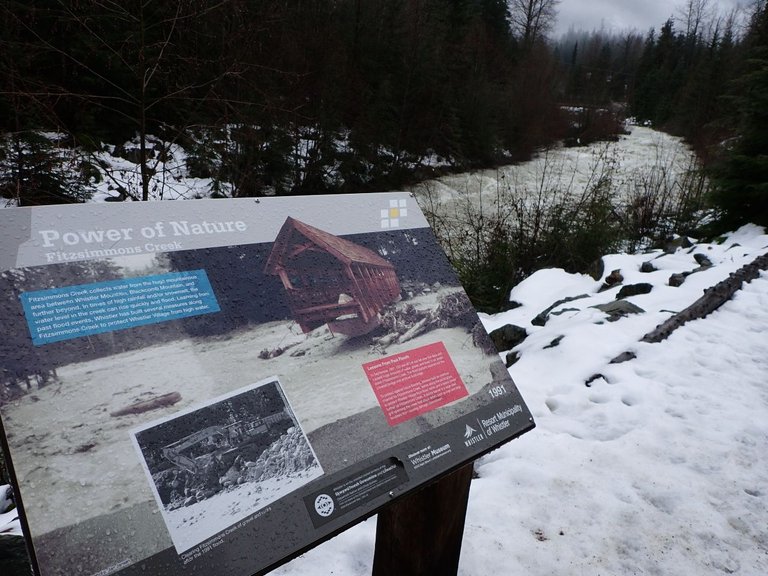
Several species of fish call it habitat including bull trout. The water's cloudy appearance, as the sign indicates, is caused by 'rock flour' present in the glacier.
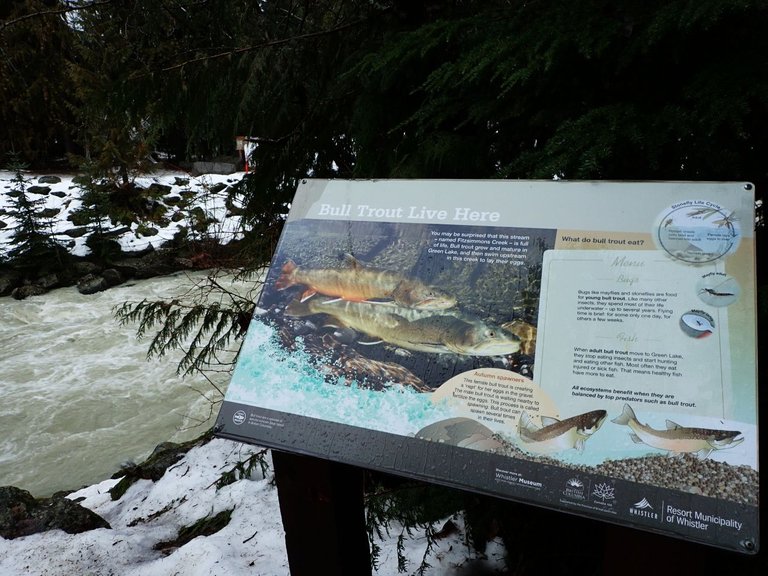

Then as one stands on the bridge, looking upstream along the shore.
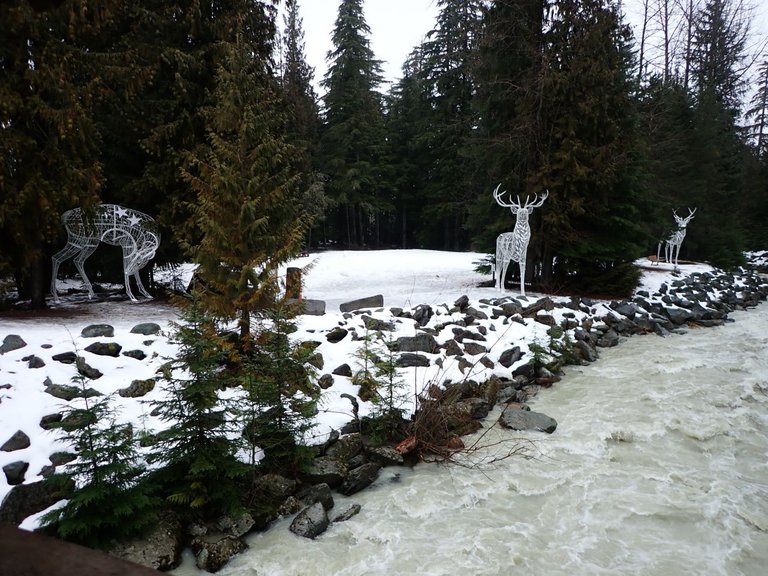
I think these art installations light up at night, but I didn't hang around long enough to find out.
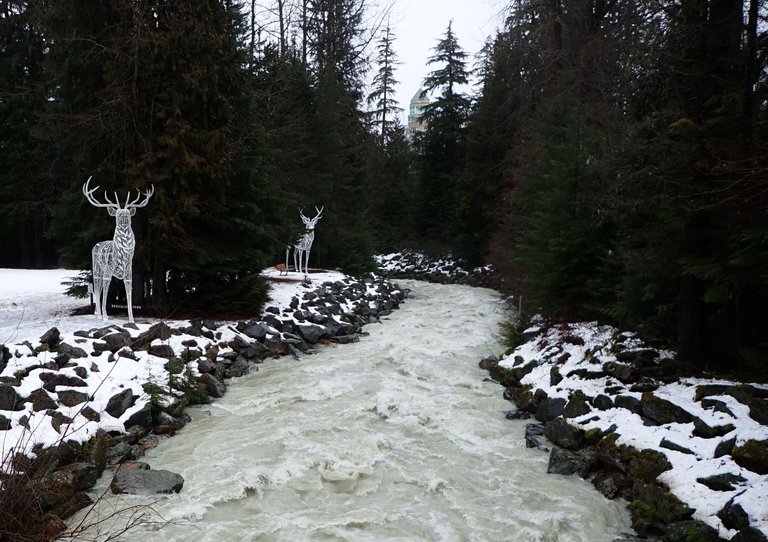
Magical, isn't it?
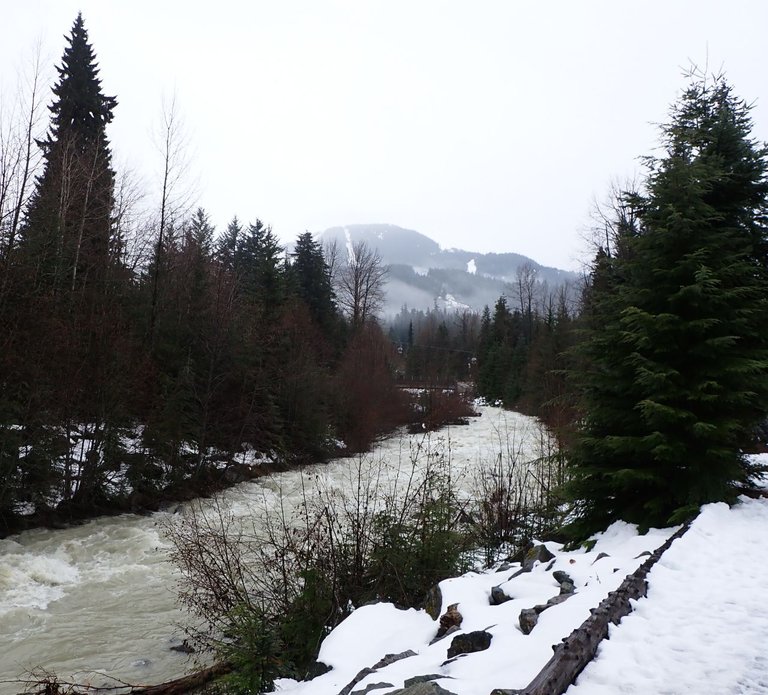
The mist, the pine trees, the wonder. A river running through it. There are stories in those forests and those mountains. Human stories. Forever forgotten perhaps. Which is why I think, once in a while, it is good to remember.
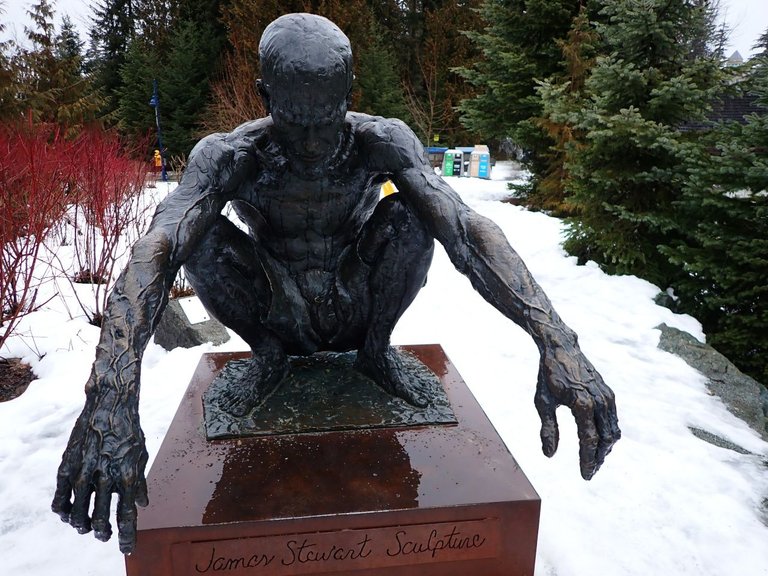
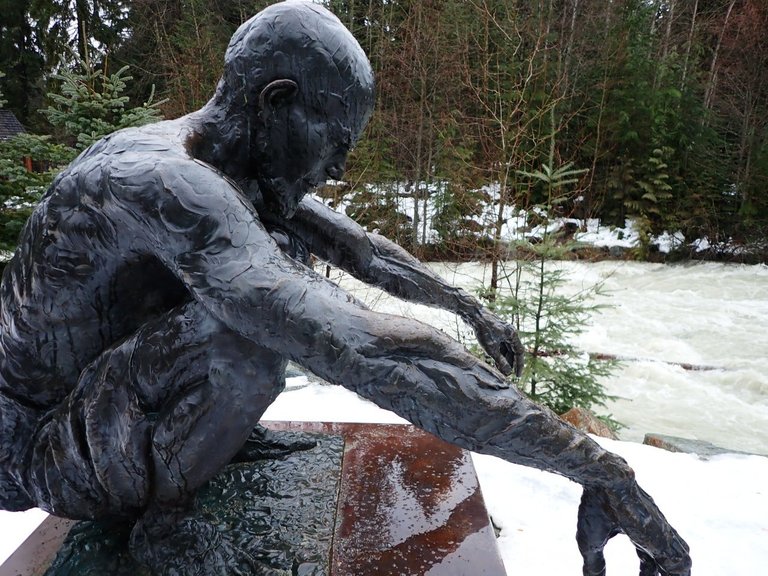
Images by @litguru
